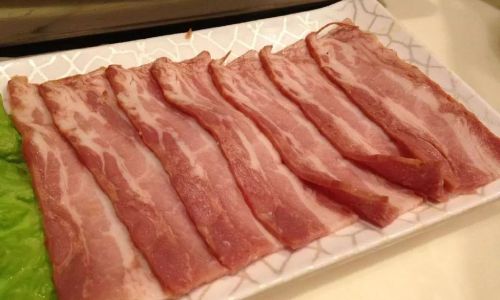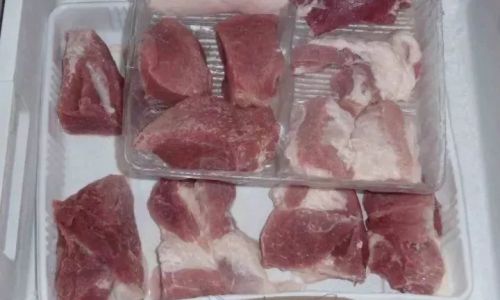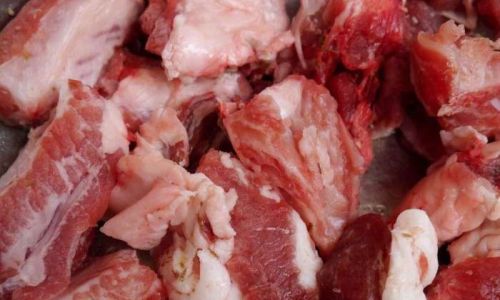Table of content
Introduction
Smoked meat, a culinary delight enjoyed worldwide, offers a unique flavor profile that combines the savory taste of salt, the smoky aroma from the smoking process, and the rich texture of slow-cooked meat. Whether it’s smoked ham, bacon, sausage, brisket, or pork shoulder, this preserved meat can be a highlight of any meal. However, before diving into the succulent goodness of smoked meat, it’s crucial to understand the proper handling and preparation steps to ensure food safety and enhance its taste. This comprehensive guide will walk you through the essential steps for preparing smoked meat before consumption, covering everything from thawing and cleaning to cooking and serving.

Understanding Smoked Meat
Before diving into preparation, let’s briefly understand what smoked meat is and how it’s made. Smoking is a preservation technique that involves exposing meat to smoke from burning wood, charcoal, or other materials. The smoke contains phenolic compounds and other chemicals that act as natural preservatives, inhibiting the growth of bacteria and extending the shelf life of the meat. Additionally, the smoking process adds flavor and aroma to the meat, making it a popular choice for various dishes.
Smoked meat can come in various forms, including:
- Smoked Bacon: Typically made from pork belly, it’s thinly sliced and often cooked before eating.
- Smoked Ham: A large cut of pork that’s been brined, smoked, and sometimes cooked.
- Smoked Sausage: A ground meat mixture encased in casing, often spiced and smoked.
- Smoked Brisket: A tough cut of beef that becomes tender and flavorful after long hours of smoking.
- Smoked Pork Shoulder: Often used for pulled pork dishes, it’s a versatile cut that benefits greatly from smoking.
Step-by-Step Preparation Guide
Thawing (If Frozen)
If your smoked meat is frozen, the first step is to thaw it properly. Improper thawing can lead to the growth of harmful bacteria. Here are the recommended thawing methods:
- Refrigerator Thawing: Place the frozen smoked meat in a container or on a plate to catch any drips and leave it in the refrigerator. This method can take several hours to a couple of days, depending on the size of the meat.
- Cold Water Thawing: Submerge the sealed, frozen smoked meat in a bowl or sink filled with cold water. Change the water every 30 minutes to ensure it stays cold. This method is faster than refrigerator thawing but still takes several hours.
- Microwave Thawing: Use the defrost setting on your microwave, checking frequently to prevent partial cooking. Microwave thawing is the quickest but least recommended method due to the risk of uneven thawing and potential partial cooking.
Never thaw smoked meat on the counter or in hot water, as this can rapidly increase the temperature to unsafe levels, allowing bacteria to multiply.

Inspecting and Cleaning
Once thawed, inspect the smoked meat carefully. Look for any signs of spoilage, such as discoloration, sliminess, or off odors. If everything looks and smells normal, proceed with cleaning.
- Rinse Under Cold Water: Gently rinse the surface of the smoked meat under cold running water. This helps remove any surface contaminants or excess salt.
- Pat Dry: Use paper towels to pat the meat dry. Excess moisture can affect the cooking process and final texture.
Note that for some types of smoked meat, like bacon or pre-cooked ham, rinsing might not be necessary if you plan to cook it immediately.
Trimming Fat and Skin (If Desired)
Depending on your preference and the recipe, you may want to trim excess fat or skin from the smoked meat. This step is particularly important if you’re working with a fatty cut like pork shoulder or brisket.
- Use a Sharp Knife: A sharp knife makes trimming easier and safer.
- Remove Fat Caps: Trim off any large fat caps or thick layers of fat.
- Skin Removal: If the recipe calls for it, use a sharp knife to carefully separate the skin from the meat.
Trimming not only helps with portion control and reduces the fat content but also ensures a more even cooking process.

Marinating (Optional)
While smoked meat already has a rich flavor, marinating can add an extra layer of taste, especially if you’re planning to cook it further.
- Choose a Marinade: Opt for acidic marinades like vinegar, lemon juice, or wine, which help tenderize the meat and add flavor. Avoid marinades with high sugar content, as they can burn during cooking.
- Marinate Time: Marinate for a few hours or overnight in the refrigerator. Longer marinating times don’t necessarily mean better flavor; over-marinating can lead to a mushy texture.
- Storage: Always marinate in the refrigerator to prevent bacterial growth.
Cooking Methods
Smoked meat can be enjoyed as is, but cooking it further can enhance its flavor and texture. Here are some popular cooking methods:
- Baking: Preheat your oven to the desired temperature (usually around 325°F or 163°C) and place the smoked meat on a baking sheet or in a baking dish. Cover with foil or a lid if you want to keep the meat moist. Bake until heated through, typically 30-60 minutes depending on the size and thickness.
- Grilling: Preheat your grill to medium-high heat. Place the smoked meat on the grill grates and cook until heated through and slightly charred, about 10-15 minutes per side. Watch carefully to prevent burning.
- Sautéing/Pan-Frying: Slice the smoked meat into thinner pieces and cook in a hot skillet with a small amount of oil until heated through and slightly crispy, about 5-7 minutes per side.
- Slow Cooking: For tougher cuts like brisket or pork shoulder, place the smoked meat in a slow cooker with your favorite broth, sauce, or spices. Cook on low for several hours until tender.
Slicing and Serving
Once cooked, let the smoked meat rest for a few minutes to redistribute juices and firm up the texture. Use a sharp knife to slice it into thin, even pieces. The slicing technique depends on the type of smoked meat:
- Smoked Ham: Slice thinly across the grain for tender, easy-to-eat pieces.
- Smoked Bacon: Slice into strips, either thick or thin, depending on your preference.
- Smoked Sausage: Slice into bite-sized pieces or cook whole and serve.
- Smoked Brisket and Pork Shoulder: Slice against the grain for maximum tenderness.
Serve the smoked meat hot or at room temperature, accompanied by your favorite sides like mashed potatoes, roasted vegetables, or a fresh salad. Don’t forget to drizzle with any leftover marinade, sauce, or gravy for extra flavor.

Storage
If you have leftover smoked meat, store it properly to prevent spoilage.
- Refrigeration: Place leftovers in an airtight container or wrap tightly in plastic wrap and store in the refrigerator for up to 3-4 days.
- Freezing: For longer storage, wrap the smoked meat tightly in plastic wrap and then in aluminum foil or place in a freezer-safe bag. Label with the date and store in the freezer for up to 2-3 months.
When reheating, use the lowest possible temperature to avoid drying out the meat. Thaw frozen leftovers in the refrigerator before reheating.
Conclusion
Preparing smoked meat before consumption involves several crucial steps, from thawing and inspecting to cooking and storing. By following these guidelines, you can ensure that your smoked meat is safe to eat, flavorful, and tender. Whether you’re enjoying it as a main dish or incorporating it into various recipes, smoked meat adds a unique and delicious twist to any meal. So, the next time you have a smoked meat delicacy, remember to prepare it right for the best possible eating experience. Happy cooking!






0 comments